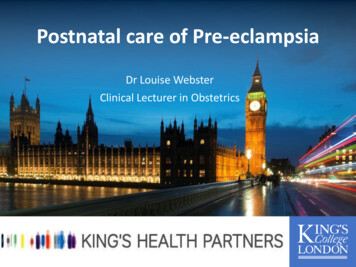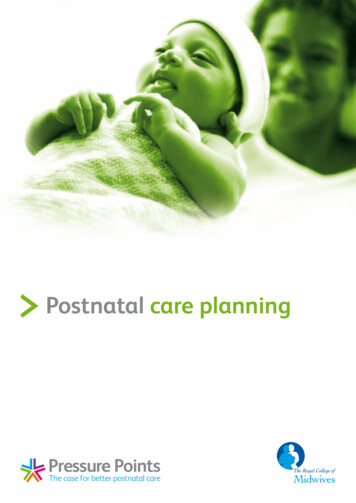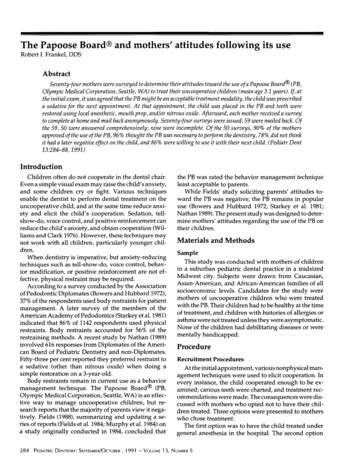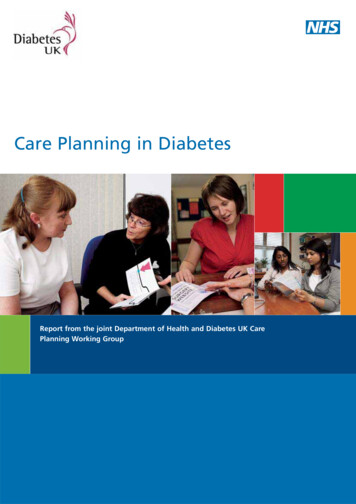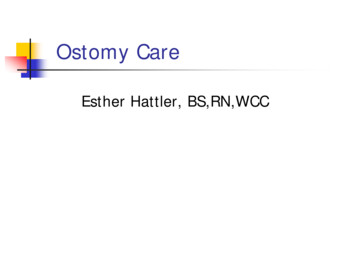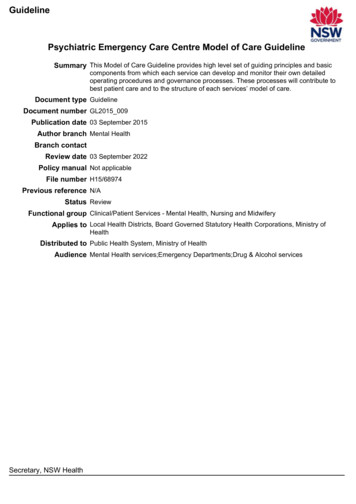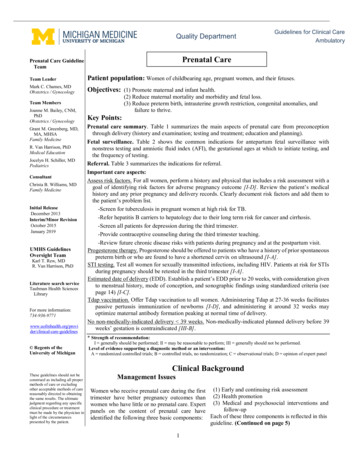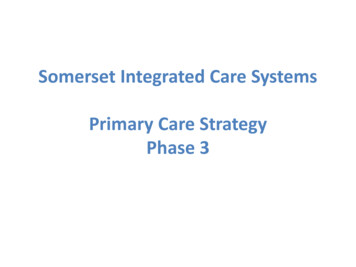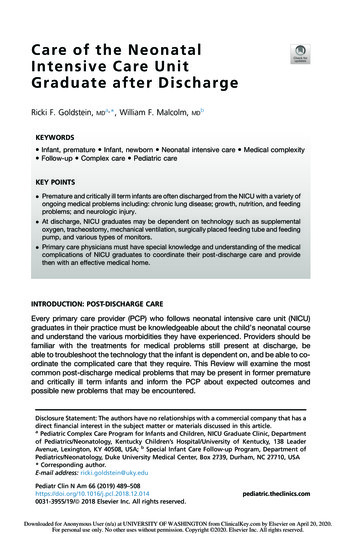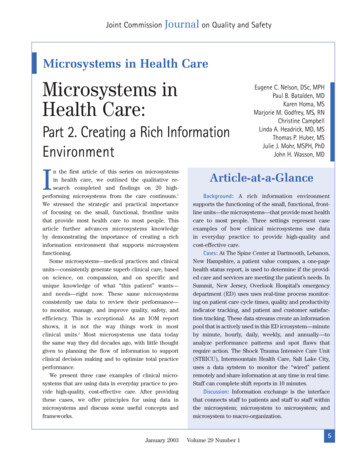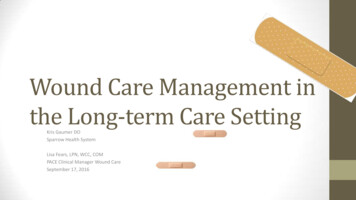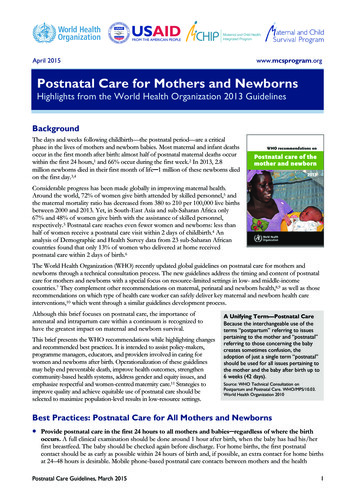
Transcription
April 2015www.mcsprogram.orgPostnatal Care for Mothers and NewbornsHighlights from the World Health Organization 2013 GuidelinesBackgroundThe days and weeks following childbirth—the postnatal period—are a criticalphase in the lives of mothers and newborn babies. Most maternal and infant deathsoccur in the first month after birth: almost half of postnatal maternal deaths occurwithin the first 24 hours,1 and 66% occur during the first week.2 In 2013, 2.8million newborns died in their first month of life 1 million of these newborns diedon the first day.3,4Considerable progress has been made globally in improving maternal health.Around the world, 72% of women give birth attended by skilled personnel,5 andthe maternal mortality ratio has decreased from 380 to 210 per 100,000 live birthsbetween 2000 and 2013. Yet, in South-East Asia and sub-Saharan Africa only67% and 48% of women give birth with the assistance of skilled personnel,respectively.5 Postnatal care reaches even fewer women and newborns: less thanhalf of women receive a postnatal care visit within 2 days of childbirth.4 Ananalysis of Demographic and Health Survey data from 23 sub-Saharan Africancountries found that only 13% of women who delivered at home receivedpostnatal care within 2 days of birth.6The World Health Organization (WHO) recently updated global guidelines on postnatal care for mothers andnewborns through a technical consultation process. The new guidelines address the timing and content of postnatalcare for mothers and newborns with a special focus on resource-limited settings in low- and middle-incomecountries.7 They complement other recommendations on maternal, perinatal and newborn health,8,9 as well as thoserecommendations on which type of health care worker can safely deliver key maternal and newborn health careinterventions,10 which went through a similar guidelines development process.Although this brief focuses on postnatal care, the importance ofantenatal and intrapartum care within a continuum is recognized tohave the greatest impact on maternal and newborn survival.This brief presents the WHO recommendations while highlighting changesand recommended best practices. It is intended to assist policy-makers,programme managers, educators, and providers involved in caring forwomen and newborns after birth. Operationalization of these guidelinesmay help end preventable death, improve health outcomes, strengthencommunity-based health systems, address gender and equity issues, andemphasize respectful and women-centred maternity care.11 Strategies toimprove quality and achieve equitable use of postnatal care should beselected to maximize population-level results in low-resource settings.A Unifying Term—Postnatal CareBecause the interchangeable use of theterms “postpartum” referring to issuespertaining to the mother and “postnatal”referring to those concerning the babycreates sometimes confusion, theadoption of just a single term “postnatal”should be used for all issues pertaining tothe mother and the baby after birth up to6 weeks (42 days).Source: WHO Technical Consultation onPostpartum and Postnatal Care. WHO/MPS/10.03.World Health Organization 2010Best Practices: Postnatal Care for All Mothers and Newborns Provide postnatal care in the first 24 hours to all mothers and babies regardless of where the birthoccurs. A full clinical examination should be done around 1 hour after birth, when the baby has had his/herfirst breastfeed. The baby should be checked again before discharge. For home births, the first postnatalcontact should be as early as possible within 24 hours of birth and, if possible, an extra contact for home birthsat 24–48 hours is desirable. Mobile phone-based postnatal care contacts between mothers and the healthPostnatal Care Guidelines, March 20151
system may be useful. The content of postnatal care isdescribed in the next two sections.Postnatal Care Highlights Provide postnatal care in first 24 hours for everybirth: Delay facility discharge for at least 24 hours. Visit women and babies with home births withinthe first 24 hours. Provide every mother and baby a total of fourpostnatal visits on: First day (24 hours) Day 3 (48–72 hours) Between days 7–14 Six weeks Offer home visits by midwives, other skilledproviders or well-trained and supervised communityhealth workers (CHWs). Use chlorhexidine after home deliveries in highnewborn mortality settings. Re-emphasize and support elements of qualitypostnatal care for mother and newborn, includingidentification of issues and referrals. Ensure healthy women and their newborns stay at ahealth facility at least 24 hours and are notdischarged early. This recommendation is an updatefrom 2006, and the minimum duration of stay waslengthened from 12 to 24 hours. Evidence suggestsdischarge is acceptable only if a mother’s bleeding iscontrolled, mother and baby do not have signs ofinfection or other diseases, and the baby is breastfeedingwell. All mothers and babies need at least four postnatalcheckups in the first 6 weeks. This is a notable changeto the previous guidance, which recommended only twopostnatal checkups within 2 to 3 days and at 6 weeksafter birth. Now, in addition to postnatal care with twofull assessments on the first day, three additional visitsare recommended: day 3 (48–72 hours), between days 7–14 and 6 weeks after birth. These contacts can be madeat home or in a health facility, depending on the context and the provider. Additional contacts may be needed toaddress issues or concerns.Table 1. Provision of Postnatal Care to Mothers and Newborns: Policy and Programme Actions Based Onthe New WHO GuidelinesWHO Recommendation 2013Policy/Programme ActionRECOMMENDATION 1: Timing of discharge from a health facility after birthAfter an uncomplicated vaginal birth in a healthfacility, healthy mothers and newborns shouldreceive care in the facility for at least 24 hours afterbirth.* (NEW in 2013)* For the newborn, this care includes an immediateassessment at birth, a full clinical examination around 1hour after birth and before discharge. Ensure respectful, women-centred quality carea is provided for allbirths. Review if increased infrastructure (beds, etc.) and staff in postnatalwards are required to provide care respectfully and comfortably forwomen to stay longer. Align policies (such as national institutional delivery incentive andinsurance schemes) with recommendation. Adapt and use a simple discharge checklist.12RECOMMENDATION 2: Number and timing of postnatal contactsIf birth is in a health facility, mothers andnewborns should receive postnatal care in thefacility for at least 24 hours after birth.a (NEW in2013) Ensure that national standards, quality improvement tools andtraining curricula promote three assessments in the first 24 hoursfor the newborn: an immediate assessment at birth; a full clinicalexamination around 1 hour after birth and again before discharge. Coordinate postnatal care with the Baby-Friendly HospitalInitiative13 to ensure that facility-based procedures and outreach tothe community support optimal breastfeeding practices. Update facility-based providers and promote best practices inpostnatal care including pre-discharge counselling, according to thenew guidelines.If birth is at home, the first postnatal contact should Review current policies and programmes to strengthen delivery andbe as early as possible within 24 hours of birth.early postnatal care for home births by midwives, other skilled(NEW in 2013)providers and/or well-trained, supervised CHWs.At least three additional postnatal contacts are Ensure national standards, quality improvement tools, trainingrecommended for all mothers and newborns, on daycurricula and behaviour change communication (BCC)3 (48–72 hours), between days 7–14, and 6 weeksmessages/materials to explicitly promote the three additionalafter birth. (NEW in 2013)postnatal care checkups (a total of four from birth in the first 6weeks) through home visits and facility-based care. Review/revise national monitoring systems to include the processindicator for postnatal care visits—number of mothers/newbornswho received postnatal within 2 days of childbirth (regardless ofplace of delivery)—for all births.2Postnatal Care Guidelines
WHO Recommendation 2013Policy/Programme ActionRECOMMENDATION 3: Home visits for postnatal careHome visits in the first week after birth are Determine how best to integrate home visits for postnatal care intorecommended for care of the mother and newborn.responsibilities and training of midwives, other skilled providersand/or well-trained, supervised CHWs. Explore appropriate mHealth strategies to communicate withmothers who may be difficult to physically reach.aWHO guidelines, Pregnancy, childbirth, postpartum and newborn care: A guide for essential practice, define this standard of care; they can be found athttp://www.who.int/maternal child adolescent/documents/924159084x/en/.Related Highlights from Other WHO Guidelines Encourage women to deliver with a skilled birth attendant at a health facility so they receive quality intrapartum andpostnatal care including administration of a uterotonic during the third stage of labour. Professional skilled care isimportant for all women and newborns during labour, childbirth and the first day after birth. Promote respectful and women-centred maternity care where women are treated with kindness, dignity and respect.Respectful maternity care is an essential part of postnatal care particularly in health facilities. It promotes best practices(such as rooming in, unless separation is medically necessary), recognizes that women and their families should be fullyinformed on all aspects of care, and values counselling as an opportunity to answer questions and address concerns.Best Practices: Postnatal Care for Newborns Strengthen postnatal care through home visits and at health facilities. Elements of postnatal care are reemphasized from the 2006 guidelines without many significant changes. At each of the four postnatal care checkups, newborns should be assessed for key clinical signs ofsevere illness and referred as needed. Nine clinical signs (listed in Recommendation 4 in Table 2 below)have been identified as danger signs that can be identified at home by a CHW or by a skilled provider in ahealth facility. Evidence suggests that simple algorithms are valid tools in both settings. Continue to promote early and exclusive breastfeeding (EBF) within delivery settings includingantenatal care, at delivery, and in all postnatal care visits. Consistent with previous WHO guidelines,evidence shows EBF reduces the risks of mortality and morbidity in the first month of life (compared topartial and predominant breastfeeding) and improves post-neonatal outcomes. It also encourages improvedbirth spacing by delaying the return to fecundity. Given the increases in institutional deliveries in manydeveloping countries, policies and programmes should actively promote facility-based counselling and supportfor EBF including counselling on common breastfeeding problems and ways to manage them if they occur. Consider the use of chlorhexidine for umbilical cord care for babies born at home to reduce newbornmortality. For newborns who are born at home in settings with high neonatal mortality (30 or more neonataldeaths per 1,000 live births) it is recommended to apply chlorhexidine (7.1% chlorhexidine digluconateaqueous solution or gel, delivering 4% chlorhexidine) daily to the umbilical cord stump during the first week oflife. This is a new recommendation, and clean, dry cord care remains the standard recommendation fornewborns born in health facilities and at home in low neonatal mortality settings. The use of chlorhexidine inthese situations may be considered only to replace application of a harmful traditional substance, such as cowdung, to the cord stump. Reinforce key newborn care messages among families and providers. WHO re-emphasizes key elementsof newborn care including delayed bathing, skin-to-skin contact and immunization. Given the vulnerability ofpreterm and low-birth-weight babies, interventions are needed to identify these newborns in home and facilitysettings and ensure they receive special care.Postnatal Care Guidelines3
Table 2. Postnatal Care for Newborns: Policy and Programme Actions Based On the New WHO GuidelinesWHO Recommendation 2013Policy/Programme ActionRECOMMENDATION 4: Assessment of the babyThe following signs should be assessed during each Review and adapt available community-based and facility-based jobpostnatal care contact, and the newborn should beaids for clinical assessments (such as integrated management ofreferred for further evaluation if any of the signs ischildhood illness, integrated management of pregnancy andpresent: stopped feeding well, history of convulsions, fastchildbirth) based on simple clinical signs of severe newbornbreathing (breathing rate of 60 per minute), severeillnesses.chest in-drawing, no spontaneous movement, fever Integrate recognition of clinical signs into CHW and skilled(temperature 37.5 C), low body temperatureprovider trainings.(temperature 35.5 C), any jaundice in first 24 hours of Review/revise educational messages to emphasize newborn dangerlife, or yellow palms and soles at any age.signs and care-seeking in counselling of pregnant and postnatalThe family should be encouraged to seek health carewomen, families and communities.early if they identify any of the above danger signs inbetween postnatal care visits.RECOMMENDATION 5: Exclusive breastfeeding (EBF)All babies should be exclusively breastfed from birth Reinforce early EBF and EBF messages during pregnancy and duringuntil 6 months of age. Mothers should be counselledall postnatal care visits.and provided support for EBF at each postnatal Ensure breastfeeding is actively promoted in all health facilities.contact. Identify and address problems th
Postpartum and Postnatal Care. WHO/MPS/10.03. World Health Organization 2010 Postnatal Care for Mothers and Newborns Highlights from the World Health Organization 2013 Guidelines April 2015 www.mcsprogram.org. 2 Postnatal Care Guidelines system may be useful. The content of postnatal care is described in the next two sections. Ensure healthy women and their newborns stay at a health .
